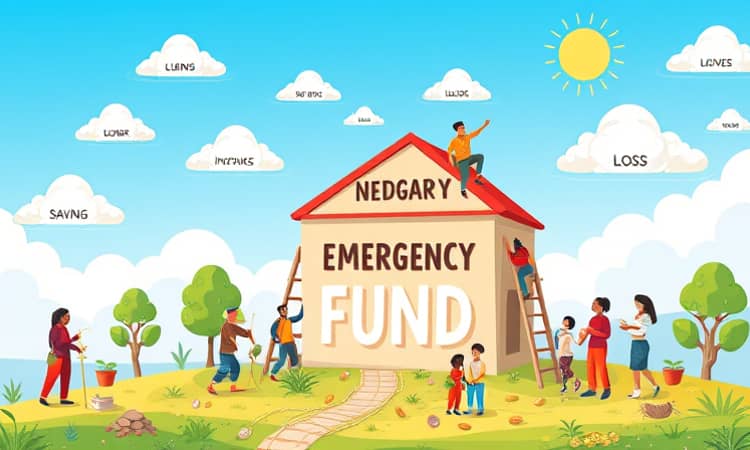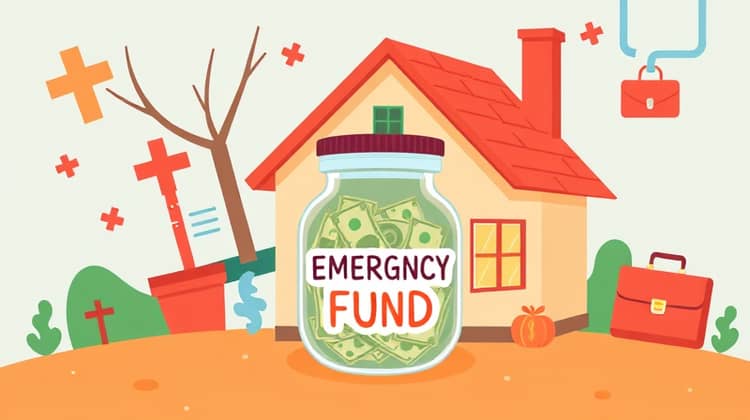Building Financial Goals? Here's Why an Emergency Fund is Key

In today's uncertain world, the importance of being financially prepared cannot be overstated. One key component of sound financial planning is establishing an emergency fund, which acts as a safety net for unexpected expenses like medical emergencies, car repairs, or job loss. This article will explore why an emergency fund is essential for achieving your financial goals and how to effectively build one.
A robust emergency fund can provide peace of mind, enabling you to navigate life’s challenges without significant financial stress. By having funds set aside, you protect yourself from the pitfalls of unexpected financial burdens and set the stage for long-term financial stability. Let's delve deeper into the fundamentals of emergency funds, including their importance, how much you should save, and the various types to consider.
Understanding the Basics of an Emergency Fund

An emergency fund is a financial cushion that allows you to manage unforeseen events without derailing your financial stability. It is critical for anyone who earns an income, regardless of their financial status, because it creates a buffer against life's unpredictability.
The goal of an emergency fund is to cover essential living expenses during times when income is disrupted or unexpected expenses arise. This preparedness can prevent you from falling into debt or having to liquidate long-term investments at an inopportune time.
- Covers unforeseen medical expenses
- Helps in case of a job loss
- Addresses urgent home repairs
- Provides peace of mind in emergencies
Ultimately, establishing an emergency fund is about preparing for the unexpected so you can focus on achieving your financial goals confidently.
Importance of an Emergency Fund
An emergency fund is essential not just for managing crises but also for instilling a sense of control over your finances. When you know that you have a safety net in place, you can make more strategic financial decisions without the constant worry of what might happen next.
Furthermore, an emergency fund can act as a deterrent against using credit cards or high-interest loans in a crisis. Without a fund in place, people might resort to borrowing money, which can lead to a cycle of debt, making it much harder to reach financial goals. This is why an emergency fund is more than just savings; it's a necessary strategic financial tool.
- Prevents debt accumulation
- Allows for better financial decision-making
- Provides peace of mind during crises
- Protects long-term investments
By prioritizing the importance of an emergency fund, you're investing in your financial future and securing yourself against life’s uncertainties.
How Much Should You Save?
When it comes to determining how much to save for an emergency fund, there is no one-size-fits-all answer; it largely depends on your individual financial situation and personal preferences. However, many financial experts recommend aiming for three to six months' worth of living expenses. This range should cover rent or mortgage payments, utilities, groceries, and other essential bills.
To effectively assess your needs, consider listing your total monthly expenses and then multiplying that number by the number of months you choose as a target for your fund. For instance, if your monthly expenses total $3,000, you would ideally save between $9,000 and $18,000.
In addition to the basic living expenses, you may also want to factor in any irregular expenses that may arise, such as car maintenance or medical expenses. Having a comfortable cushion can help you feel more secure as you navigate life’s unpredictability.
Types of Emergency Funds
Not all emergency funds are created equal. Depending on your financial goals and lifestyle, you may find yourself needing different types of emergency funds. Understanding these various types can help you build a fund tailored to your specific needs.
The core types of emergency funds generally include liquid funds for immediate access and more structured savings accounts that may offer higher interest rates.
- Standard savings account for easy access
- High-yield savings account for better interest
- Money market accounts for extra growth
- Certificates of deposit for longer commitment
Understanding these options allows you to make informed choices about where to allocate your emergency savings for optimal accessibility and growth.
Why an Emergency Fund is Crucial for Financial Goals

Having an emergency fund is not just about preparing for the unexpected; it's a fundamental aspect of pursuing your financial goals. Whether it's saving for a home, retirement, or your child's education, an emergency fund provides the financial security needed to stay focused on long-term objectives.
Without an emergency fund, any financial hiccup can throw you off track, leading to delayed savings or, worse, calling for liquidating investments that may hinder future growth. This practice can counteract your plans for wealth accumulation and destabilize your financial journey.
- Helps maintain focus on long-term goals
- Prevents debt that can derail progress
- Reduces stress during financial emergency
- Enhances overall financial security
Consequently, an effective emergency fund is not just a safeguard; it is a vital component of a well-rounded financial strategy that supports achieving various milestones in life.
How to Build Your Emergency Fund

Building an emergency fund might seem daunting, but it can be achieved with structured strategies and discipline. Start by assessing your budget to identify how much you can allocate monthly towards your emergency fund. This assessment will give you a realistic view of your financial situation and help you establish a consistent savings habit.
Next, set a target goal based on your monthly expenses and desired timeframe. Having a clear goal can serve as motivation and allow you to gauge your progress over time. For instance, if you aim to save $15,000 in two years, you would need to save about $625 a month. This clear picture can empower you to make adjustments where necessary.
Lastly, make savings automatic through direct deposits or setting up a dedicated savings account, making it easier to contribute regularly without having to think about it. Automating your savings can significantly enhance your ability to reach your goal without the temptation of dipping into this fund for non-emergencies.
- Start small and build consistently
- Set up automatic deposits
- Use a high-yield savings account
- Reassess and adjust your contributions periodically
Building an emergency fund takes time and dedication, but it is an invaluable part of your financial wellness and security.
Conclusion

Establishing an emergency fund is essential not just for coping with unforeseen crises but also serves as a foundation for achieving your overarching financial goals. When you are financially secure in one area, it allows you the peace of mind to pursue growth in others.
By maintaining an emergency fund, you are investing in your future, ensuring that unexpected challenges do not hinder your dreams of home ownership, starting a business, or enjoying a comfortable retirement. The road to financial stability and success involves proactive preparation.






